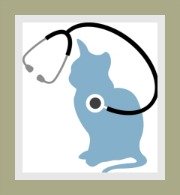Feline AIDS Symptoms
Recognize the Signs
Feline AIDS symptoms differ during the various phases of the disease.
In this chapter on feline immunodeficiency virus (FIV) we provide comprehensive details about the symptoms during the 3 distinct stages of the disease and the diagnosis and treatment of this feline infectious disease.
Visit the previous chapter on feline aids virus for information on the cause, the transmission, the incubation and the 3 stages of development of this common infectious cat disease.
symptoms of fiv
Feline AIDS symptoms may vary from cat to cat.
These are the most common symptoms:
phase 1
- Mild temperature
- Enlarged lymph nodes
- General malaise (out of sorts)
phase 2
- Cat is asymptomatic (no symptoms)
- The virus becomes dormant
- The cat is not ill, but is capable of infecting other cats - it is a carrier of the virus and will be for life
phase 3
The virus re-activates and destroys T-lymphocytes which are types of white blood cells needed for the proper functioning of the immune system.
As the cat's immune system is suppressed, the cat is unable to fight infection.
Feline AIDS symptoms in the chronic stage progress to:
- Gingivitis - an inflammation of the gums
- Stomatitis - an inflammation of the mucus membrane of the mouth, the tongue and lips
- Conjunctivitis - inflammation of the lining of the inner eyelids accompanied by a discharge
- Any wounds or sores do not heal
- Poor appetite and weight loss
- Persistent fever
- General fatigue
- The coat is dull and in poor condition with associated hair loss
- Gastroenteritis - inflammation of the stomach and intestines resulting in diarrhea and vomiting
- Anemia - a reduced number of red blood cells and hemoglobin in the blood
- Recurrent and chronic infections of the respiratory tract, urinary tract, the skin and eyes
- Neurological symptoms - severe seizures
- Tumors
The virus is slow acting which means that from the time that the cat
contracts the infection to the appearance of symptoms seen in the
chronic stage of the disease can be months to several years.
feline aids diagnosis
Cat owners who suspect that their cat has been infected by feline aids virus or presents with feline aids symptoms should visit their veterinarian for a complete physical examination and blood tests.
The veterinarian will make a diagnosis based on the medical history obtained from the cat owner.
All feline AIDS symptoms will be evaluated to assist in determining a diagnosis.
To confirm the diagnosis the vet will obtain a blood sample from the cat for an enzyme-linked immunosorbent assay test.
This blood test will identify the presence of feline immunodeficiency virus antibodies, which indicates that the cat has been exposed to the cat disease.
There is
another test that can be done, but this test is relatively expensive,
lengthy and can only be performed by specialized laboratories. This test
involves the isolation of the virus from the lymphocytes.
Note: Blood test results can have a false-negative or false-positive result and may require additional testing.
- If the blood is taken too early after infection there may be no antibodies present in the blood and this will require a re-test.
- If the disease is in the final stages, there may no longer be antibodies circulating in the blood, hence a false-negative result.
- A false-positive result may be established in kittens born from FIV infected mothers. The antibodies are transferred to the kittens (not necessarily the disease).
Cats or kittens that have received cat vaccines for FIV will also produce false-positive results.
feline aids treatment
There is no specific treatment for feline immunodeficiency virus.
Treatment normally involves management of the secondary infections and controlling the feline AIDS symptoms.
Feline AIDS treatment will also depend on the severity of the infection and the stage of the cat disease.
In certain instances, euthanasia may be appropriate if the disease is at a very advanced stage and if the cat is experiencing pain, discomfort and has a poor quality of life.
If the disease is diagnosed early and the cat is in good health, feline AIDS should not signify a death sentence.
Prevention and treatment will include the following:
- Regular visits to the veterinarian for check-ups
- Cat needs to be kept indoors to minimize its exposure to contagious diseases and any cat fights
- All routine vaccinations should be kept up to date
- Cat must be kept free of internal parasites (worms) and external parasites (ticks/ and fleas)
- The cat should be fed a high quality cat food to maintain
optimal nutritional health.
- Raw or un-pasteurized dairy products should
not be given to cats with compromised immune systems due to possible
bacterial contamination
- Any infection must be treated as soon as possible and treatment needs to be aggressive to prevent the infection from progressing
- The veterinarian will assess the feline AIDS symptoms and
determine which drugs would provide the most appropriate treatment.
- Drugs may include medicine for pain relief, anti-inflammatories,
antibiotics for the control of infection, anti-viral or anti-fungal
treatment and drugs that enhance the immune system.
- Cats suffering from gastroenteritis may require fluid and electrolyte replacement
Top of Feline Aids Symptoms Page
Return to Feline Aids
search our site
please like us
share our site
recommend on google
favorite pages





